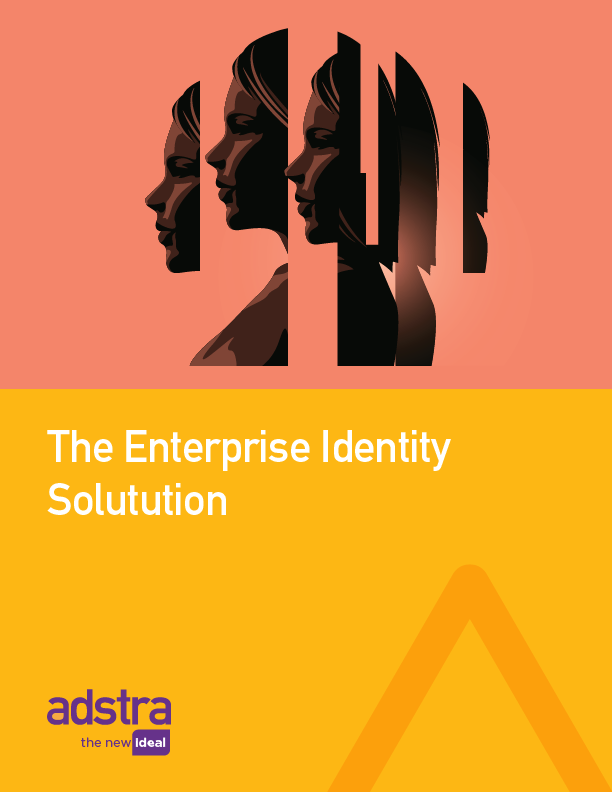March 24, 2021
Adstra CEO Rick Erwin sat down with Aisle Rocket CEO Ross Shelleman on March 9, 2021, to discuss how each company is responding to changes in the data and advertising industry. The following Q&A provides an edited selection of that conversation.

Rick Erwin, Adstra CEO
The notion of identity has been a topic in our industry, as we all know, for 5 to 10 years now, and has certainly been a hot topic for the past five. But we actually see it changing a lot before our very eyes, and what’s changing is particularly driven by the acceleration effect of COVID, and more and more consumer spend is shifting to direct.
If you’re a marketer, and you have not been primarily oriented on direct to consumer, you don’t think of identity the same way as those that have had a DTC operation underway for some time. LL Bean, for example, thinks of identity differently than Procter and Gamble. But as Proctor and Gamble see more and more of its product categories getting an uptake with direct-to-consumer plays, all of a sudden Proctor and Gamble is beginning to think about identity differently. And the substance of that difference is the realization they have to be the ones to control identity in all its forms. This may be the first time this has ever happened outside of what we think of as traditional direct-to-consumer channels. For financial credit cards, insurance, retail, they have always had a direct-to-consumer component, but now what’s happening is really all categories of consumer spend are waking up to going direct because it’s a fundamentally better business model.
Once a company goes direct, they have to do marketing differently than they ever did before. And part of that is realizing that they better own and control this precious asset, which is their customer’s identity. That’s happening in a way that never happened before the past couple of years. At the same time, these companies are scared to death of owning and controlling data that they’ve never had to manage before. So that’s where Adstra has gotten a lot of traction recently, through our Portable Data Module which lets the identity graph sit behind the brand’s firewall and entirely in the brands environment if they choose. And that’s proven to be a very interesting proposition to a lot of companies.
That’s the thing that’s really catalyzed our growth in the past year, and because of that, we’re really setting up a different, expanded strategy than what we had before.
Ross Shelleman, Aisle Rocket CEO
As we have this conversation with brands, Aisle Rocket stays really attuned to the big differences in the market in terms of readiness for this type of thing. What we see is a huge gap between brands that are hands-on with their tech stacks and those that are primarily focused on outcomes. There are still a lot of brands out there that ask us, “what is an identity graph?” And when it comes to running it behind their firewall vs. not, they wouldn’t even know what you’re talking about. You could give it to them for free and they wouldn’t know what to do with it.
Where I’m seeing more interest than ever before is in the business output of what an identity graph can do. More than ever, brands are seeking integration across channels. They want to target their customers everywhere they can find them. Segmentation is not limited to giving them a real-time understanding of who their best customers are. From an identity perspective, folks like us understand that it involves a lot of complex, sophisticated technology. But for many brands, they don’t want to know how the sausage is made. It’s much more about the business case of how they’re marketing to specific people and what it does for the bottom line.
We approach our clients and say: let’s talk about business outcomes from an analytics perspective and work backward. It doesn’t matter what their MarTech stack looks like at the time. Because what we find is, even those with large tech investments still are unsure how to use them properly. So we start with the broader business objective and let that dictate the decisions we help make on the technical side.
Rick:
Yeah. There’s this continuum of doctors to dump trucks, as I like to say. Some clients need to be treated as patients who you diagnose and cure, end to end. For Aisle Rocket, that requires that you guys really be on the leading edge of these capabilities. Adstra’s model is more on the dump truck side, in that we’ve always been eager to not go too far towards doctor, because that leaves us the ability to work with a broader array of partners who cover all kinds of different specialty areas. What makes our companies so complimentary is that we don’t want to get in the way of your client relationships with your very tight advisory responsibilities, but we want to be able to provide the solutions across the board.
Ross:
Absolutely. I mean, I’ve never seen so much appetite for data-driven solutions. One of the things that we advocate is this notion of let’s solve the business problem and figure out what data we need and what technology to solve it, whereas I think we’ve been through this cycle where the emphasis was on the technology and the data first.
Rick:
I think that’s a great point. What do you, what do you see? So you have a really interesting vantage point with your marketer clients, where you get to see the ones that understand how data-driven marketing is different. When you guys sit around and talk about a client or prospective plan, what predicts whether one will a client will be able to “get it” enough to be effective at data-driven marketing”.
Ross:
It sounds so basic, but it’s those that are focusing on business outcomes, numbers tied to revenue, or tied to your true non-marketing metrics, that succeed more than the clients that look to marketing metrics as the final horizon of what works. Too often, there’s very little connection between what they’re doing from a media perspective and how the business itself is doing. If we have a business person in the conversation, not just a marketing team, there’s often a better outcome at the end of our engagement.
Rick:
The biggest one that I see is the gulf between brands that have a history in measured media vs. those that don’t. Just think about the whole notion of allocating media budgets based on GRPs, where measurement is not whether the ad worked but whether the ad was seen. That’s what many folks did for their practice in marketing for 40 years, it’s so counterintuitive to do marketing based on mathematics, which is obviously what you have to do with direct or different, more data-driven tactics.
Ross:
No matter how hard they try, they just can’t decouple. Right.
Rick:
Right. But what I see, what I see happening is that marketers, advertisers do understand that. You see people like Marc Pritchard saying that the inevitable reality is every ad impression we buy will be digital and addressable at the individual level. People like Marc get it. But the thing is, they just have to transform the organization that’s underneath them. That’s massive. That’s still working with agency of record providers that don’t know what’ll work, or are not organized to change.
Ross:
I say this with clients all the time. There has to be a balance, right. Because there’s a huge place for the lift that occurs for highly targeted media supported by broad-stroke brand awareness. Some brands want to be incredibly mathematically driven with a handful of channels, but they need to balance it against the brand awareness campaigns they’ve got going in less measurable mediums.
There’s no easy button here. We can have all the data in the world, and we can be as smart and mathematical as we want. But it’s still marketing. We are still walking into a casino and placing a bet. It’s whether we’re counting cards or not. Too often, clients think, now you must have all the answers and know exactly how it’s all going to work because we have data and the technology. Well, if I could do that, I’d start a brand and just clean up.
Rick:
We see this with all these digitally native clients that they start out with Facebook for acquisition, and for a time, a hundred percent of their acquisition is Facebook. And then inevitably, they reach an asymptote where the cost of acquiring the next customer is literally greater via Facebook than the lifetime value that that customer will provide them. And that is the pivotal moment where they realize they need to reach out and understand how to really do true omnichannel marketing, including direct mail. You would think many of these DTC brands would have completely shunned direct mail, but it ends up being extremely successful for them when they haven’t been using it.
Ross:
Direct mail is still one of my most favorite channels. This is where the identity piece comes in. If I have a highly specific audience that I’m targeting digitally and I can identify the top half of that audience from a prospecting perspective, you layer in a direct mail piece.
We’re also thinking about identity not just from the perspective of putting media in the market. What’s even more important now is to think about identity from the attribution perspective. We’re actually seeing that as the easier place to have a conversation about identity. How can you measure anything if you don’t even know who you’re reaching?
Rick:
You can’t. How do you talk to clients about this?
Ross:
The upshot is this: brands need to take attribution out of the platforms, the walled gardens, and do it offline. It’s also how we’re going to establish the correlation between direct mail, digital, Facebook, and connected TV. I remind clients all the time that let’s not forget the best measurement of marketing occurred in the heyday of cataloging. I know who in this household ordered, these things, I sent them this many, right? Today, it’s about applying that logic to the full omnichannel mix. I know who I’m marketing to while I have the identity aspect and they received X number of digital impressions, Y of them connected… you know, go down the list and start teasing out the impact.
Rick:
Some people, unfortunately, only know digital marketing. They don’t get this notion that you would actually measure something beyond a conversion. A lot of them dismiss the attribution you’re talking about as being something that only works for if you’re bottom of the funnel. The insight and precision of older forms of direct marketing appear completely foreign to the people raised in this digital ecosystem.
When people express concern over all of the change we see with recent changes to the industry, I always point out: this industry has always been that way. It was just different stuff 20 years ago. Personally, I think we’re in the best time that this industry has ever seen, because it’s still the top of the second inning in terms of the number of advertising and marketing decisions that touch data. It’s still in its infancy. People just don’t realize that because it’s, there’s a whole big multi-billion dollar industry around it now that didn’t use to exist, but we’re still in the early days.




